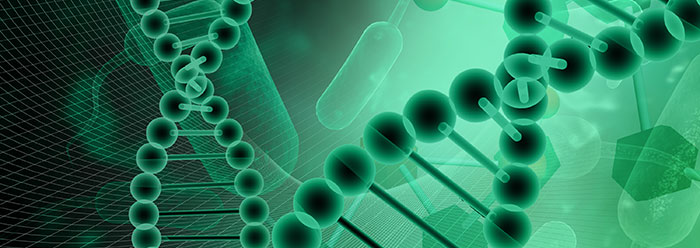 Beta-Globin
Pseudogene Is Functional After All by Jeffrey Tomkins, Ph.D.
*
Beta-Globin
Pseudogene Is Functional After All by Jeffrey Tomkins, Ph.D.
*
One of the key arguments of human evolution has now suffered the same fate as many other debunked icons of the errant paradigm of "junk DNA." In this case, it is new research related to the beta-globin pseudogene—which now shows it to be functional and important to hemoglobin gene regulation.
Hemoglobin is a protein in human red blood cells that transports oxygen throughout the body's circulatory system. The human hemoglobin protein is actually a cluster of two chains of different sub proteins. One of these chains is called the "alpha-globin" which remains the same from embryo development to adulthood. The second set is called the "beta-hemoglobin" chain which specifically changes at the embryo-to-fetal transition and again at the fetal-to-adult transition. This amazing bio-engineering allows the developing embryo-baby to receive oxygen at the correct levels throughout its critical growth processes.
The human beta-globin proteins are encoded in a cluster of six genes that extends over 80,000 bases on chromosome 11. The embryo-to-adult growth stage expression of each gene in the cluster depends on that specific gene's interaction with a control region preceding the whole cluster called the "locus control region" or LCR.
While five out of the six genes in the beta-globin cluster encode functional proteins, one of the genes called HBBP1 does not, because of several stop sequences in its code that were once thought to be mutations. This gene was classified as a pseudogene (a broken defunct remnant) because of its assumed non-functionality. Because the gene, along with its presumed errors, is also found in chimpanzees, evolutionists claimed it as proof that humans inherited their version of the gene from a common ancestor with chimps.
One of the main problems with this idea is the actual evidence for the claim. Molecular evolutionist's who study DNA sequence, have wondered why, if the HBBP1 gene is non-functional, its DNA has not mutated over the past 3 to 6 million years of assumed human evolution (compared to chimps) if there has been no selection restraint imposed on it. In other words, the so-called evidence for common ancestry with this sequence actually argues against it. It also indicates that the HBBP1 gene may actually be functional and serving a common purpose in both humans and chimps.
A recent paper published in the journal Genome Biology and Evolution now confirms the fact that the HBBP1 gene is highly resilient to change and is in fact functional.1 Researchers compared the beta-globin gene clusters in many different individuals in both humans and chimpanzees. Out of the six genes in the beta-globin cluster, the HBD gene and its companion (the next gene in the cluster), the HBBP1 pseudogene, are highly non-variable compared to the other beta-globin genes. These results indicate that virtually no mutation is tolerated in the so-called pseudogene area, implying that it is functionally important.
The researchers then analyzed the HBBP1 pseudogene region for gene-function data, related to the ENCODE project,2, 3 and found that it is actively associated with transcriptional (gene control) regulation in conjunction with the LCR region that controls the whole beta-globin gene cluster.
In addition, new information in the PseudoMap database4 shows that the HBBP1 pseudogene encodes two different regulatory RNAs that are thought to control the first gene in the beta-globin cluster (HBE) that is involved in early embryogenesis. These regions in the HBBP1 pseudogene also have the classic biochemical genetic marks of functionally active DNA—just like regular genes.
This new functional data meshes well with another recent study showing that a single base mutation in the HBBP1 pseudogene is associated with a blood disease called beta-thalasemia.5
Instead of being a useless mutated remnant according to failed evolutionary predictions, the HBBP1 beta-globin pseudogene appears to be genetically active and plays a key functional role as a cleverly engineered feature programmed by God the Creator.
References
- Moleirinho, A., et al. 2013. Evolutionary Constraints in the β-Globin Cluster: The Signature of Purifying Selection at the δ-Globin (HBD) Locus and its Role in Developmental Gene Regulation. Genome Biology and Evolution. 5 (3): 559–571.
- Tomkins, J. 2012. Junk DNA Myth Continues Its Demise. Acts & Facts. 41 (11): 11-13.
- The ENCODE Project Consortium. 2012. An Integrated Encyclopedia of DNA Elements in the Human Genome. Nature. 489 (7414): 57-74.
- PseudoMap - A resource of exploring esiRNA-mediated mechanism of pseudogenes. Posted on pseudomap.mbc.edu.tw, accessed March 25, 2013.
- Giannopoulou, E. et al. 2012. A Single Nucleotide Polymorphism in the HBBP1 Gene in the Human β-Globin Locus is Associated with a Mild β-Thalassemia Disease Phenotype. Hemoglobin. 36 (5): 433-445.
* Dr. Tomkins is Research Associate at the Institute for Creation Research and received his Ph.D. in Genetics from Clemson University.